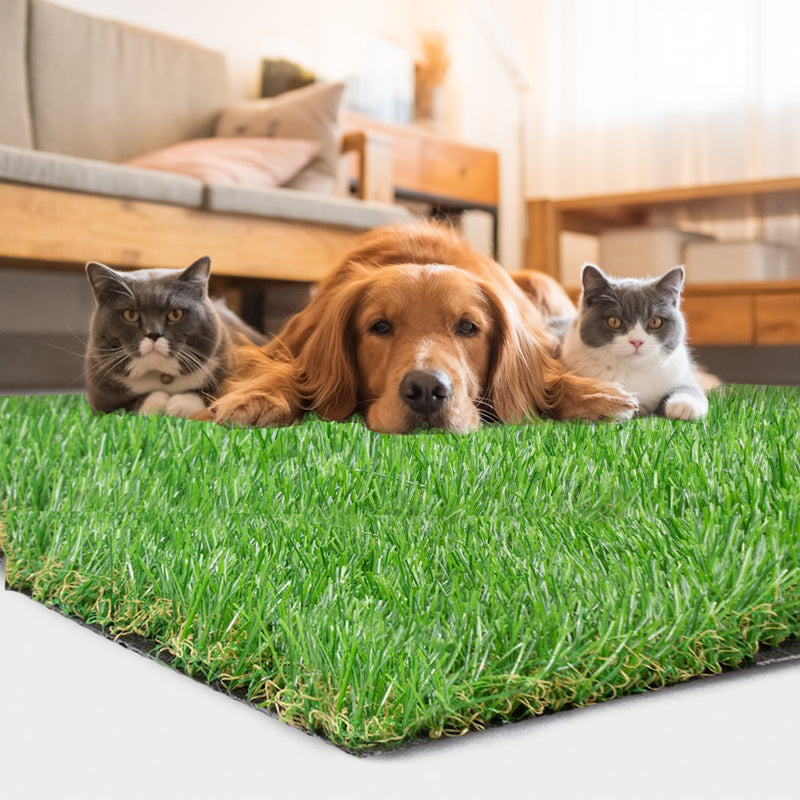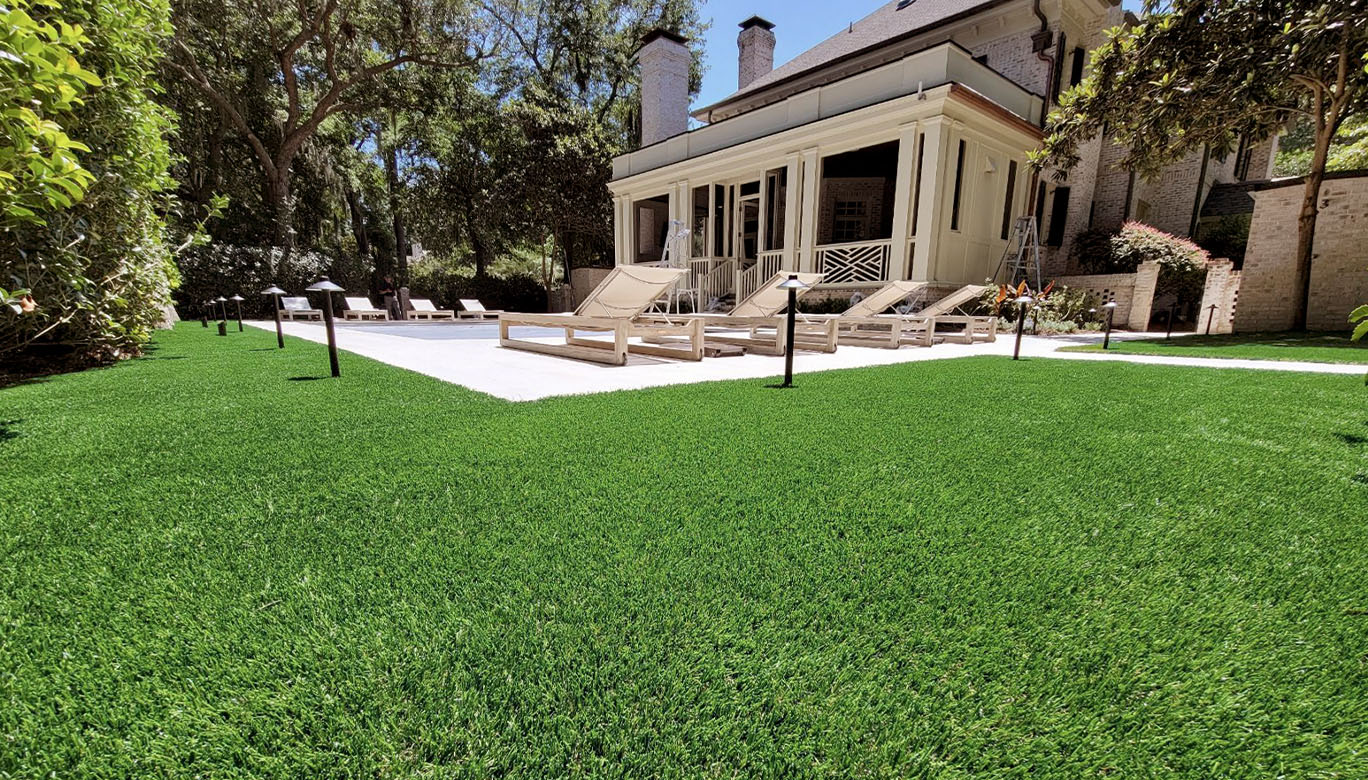Long-Lasting Arizona Artificial Turf for Residential and Commercial Applications
Long-Lasting Arizona Artificial Turf for Residential and Commercial Applications
Blog Article
Look Into the Environmental Benefits of Opting for Artificial Turf Solutions
The fostering of synthetic lawn solutions provides an engaging opportunity to attend to pushing environmental difficulties. By dramatically decreasing water use and decreasing the application of dangerous chemicals, these choices not only promote lasting landscape design yet likewise secure neighborhood ecosystems.
Water Conservation Perks
Among one of the most significant advantages of synthetic grass is its capability to preserve water. Traditional turf lawns need considerable irrigation, particularly in locations prone to drought or water limitations. In contrast, synthetic grass does not require watering, significantly decreasing the general need for water sources. This attribute is specifically valuable in deserts where water shortage is a pressing concern.
By eliminating the demand for regular watering, man-made turf adds to lasting landscape practices and assists mitigate the environmental influence of excessive water usage. Moreover, the conservation of water encompasses the reduction of overflow, which can cause soil erosion and waterway air pollution.
Furthermore, the installment of synthetic grass permits house owners and districts to allocate water resources much more effectively, concentrating on crucial usages such as drinking water and agriculture. The shift towards man-made grass not only promotes accountable water usage but likewise straightens with more comprehensive ecological objectives targeted at protecting natural deposits.
As communities increasingly prioritize sustainability, the water preservation advantages of synthetic grass provide a compelling case for its fostering in industrial and residential landscape design tasks.
Lowered Chemical Use
The shift to man-made turf considerably decreases the dependence on chemical therapies typically used in all-natural lawn maintenance. Conventional turf management typically involves the application of herbicides, chemicals, and fertilizers to advertise growth and control insects. These chemicals can position risks to human wellness, neighborhood wildlife, and the environment, contributing to dirt and water contamination.
In comparison, synthetic lawn eliminates the demand for these dangerous compounds. By decreasing the launch of artificial compounds into the community, fabricated turf promotes healthier soil and water systems.
Additionally, the lack of chemical drainage linked with synthetic grass setups assists shield neighborhood rivers from air pollution, supporting aquatic life and preserving biodiversity. Arizona turf. As areas increasingly focus on lasting methods, selecting synthetic grass presents a practical service that aligns with ecological preservation objectives. With this shift, building proprietors can take pleasure in rich eco-friendly areas without jeopardizing ecological wellness, leading the way for a more lasting future
Lower Carbon Footprint

Furthermore, the setup of synthetic grass can cause substantial water preservation. All-natural lawns call for considerable amounts of water for watering, which not just contributes to the carbon impact related to water removal and therapy yet also stress neighborhood water sources. In contrast, synthetic lawn requires minimal maintenance, needing no watering, therefore considerably lowering water use and its associated energy expenses.
Furthermore, the long life of artificial turf contributes to its lower carbon influence. With a lifespan of up to 15 years or more, the need for regular replacements is decreased, leading to less waste and lower power intake in production and throwing away conventional lawn alternatives. Overall, synthetic grass presents a sustainable option for ecologically conscious landscaping.
Habitat Conservation
Environment preservation is an essential factor to consider in the discussion over landscape design options, especially when comparing artificial lawn to all-natural turf. Natural grass yards commonly need substantial maintenance, consisting of making use of herbicides, pesticides, and plant foods, which can adversely influence regional environments. These chemicals can leach right into the dirt and rivers, harming indigenous plants and fauna and interfering with local environments.
Synthetic grass gets rid of the demand for unsafe chemicals, thereby safeguarding close-by wildlife and preserving the stability of bordering ecological communities. The installation of man-made lawn can lead to the conversion of previous grass areas right into even more biodiverse landscapes, such as pollinator yards or native plant areas, which can sustain neighborhood wild animals.
Ultimately, the change to man-made lawn not only conserves water page and lowers upkeep initiatives however also fosters an extra unified connection between human tasks and the native environment, promoting environment conservation at the same time.
Long-Term Sustainability
Long-lasting sustainability is a critical variable in examining the advantages of synthetic grass over typical yard yards. One of one of the most substantial benefits of synthetic grass is its sturdiness; it can last as much as 15-20 years with minimal upkeep, whereas natural yard calls for constant reseeding and substitute. This longevity lowers the demand for continuous resources, such as water, plant foods, and pesticides, which are crucial for preserving a healthy yard yard.
Additionally, synthetic grass contributes to a decrease in carbon discharges associated with grass care tools. Standard lawns usually need gas-powered mowers, trimmers, and blowers, all of which add to air pollution. Arizona artificial turf. On the other hand, synthetic grass eliminates the requirement for such devices, promoting a cleaner environment
Additionally, the production of synthetic grass progressively utilizes recycled navigate to this site products, enhancing its sustainability profile. As makers take on environment-friendly techniques, the environmental footprint of synthetic grass proceeds to lessen.

Verdict
The fostering of artificial turf options offers substantial ecological benefits, including substantial water conservation, minimized reliance on harmful chemicals, and a lower carbon footprint. Additionally, synthetic grass aids in preserving all-natural environments by decreasing land disruption and promoting long-term sustainability through making use of durable products. Jointly, these elements underscore the possibility of synthetic grass to contribute favorably to environmental health and supply a sensible option to conventional landscape design techniques in a significantly resource-conscious world.
In contrast, man-made grass does not need watering, significantly lowering the general demand for water sources. By decreasing the launch of synthetic substances right into the ecological community, fabricated lawn promotes healthier my link dirt and water systems.
In addition, the setup of synthetic grass can result in substantial water preservation. In contrast, fabricated turf requires minimal upkeep, calling for no watering, consequently significantly decreasing water use and its associated power prices.

Report this page